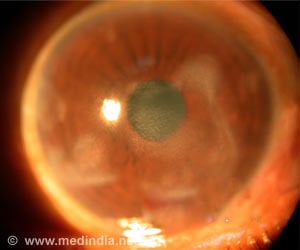Discovery of a gene in zebrafish that triggers congenital blindness could lead to a suitable cure for similar disease in humans.

TOP INSIGHT
Leber Congenital Amaurosis - or LCA - is one of the most widespread causes of child blindness and accounts for nearly 5% of vision impairments overall.
LCA affect the retina, the thin layer of tissue at the back of the eye that detects light as well as differentiates colors and communicates the information to the brain via the optic nerve. A healthy retina usually features light-sensitive cells -- photoreceptors -- called cones and rods. Cones are specialized in bright environment and detect colors while rods are used in dim light but are monochrome, which is why we see in black and white at night. A person with LCA will display deformed or absent cones and rods, thus preventing the detection of light.
A total of 24 genes including a gene called Aipl1 -- standing for aryl hydrocarbon receptor interacting protein like 1 -- have been linked to LCA in humans and mice. The illness occurs when a DNA mutation within one of the genes affects the normal ocular development or induces photoreceptor - the cones and rods - degeneration.
OIST scientists selected the zebrafish as an animal model because its retina is rich in cones and its visual acuity can be measured with a simple device. The researchers studied a genetically mutated zebrafish embryo that did not react to visual stimuli. They discovered that zebrafish DNA contains two Aipl1 genes, namely Aipl1a and Aipl1b, which are respectively active in rods and cones.
The mutant -- called gold rush (gosh) -- presents a genetic mutation in the Aipl1b DNA sequence, losing Aipl1 activity in cone photoreceptors. Consequently, the cone photoreceptors showed a deformed morphology and sustained degeneration. Rods however were not affected, suggesting the degeneration is cone-specific.
The research indicates that Aipl1b gene is important for visual functions and maintenance of cone photoreceptors in the zebrafish. Without it, cones do not detect light stimuli and degenerate during development, which are clues for treating the illness in humans.
Source-Eurekalert
 MEDINDIA
MEDINDIA



 Email
Email










